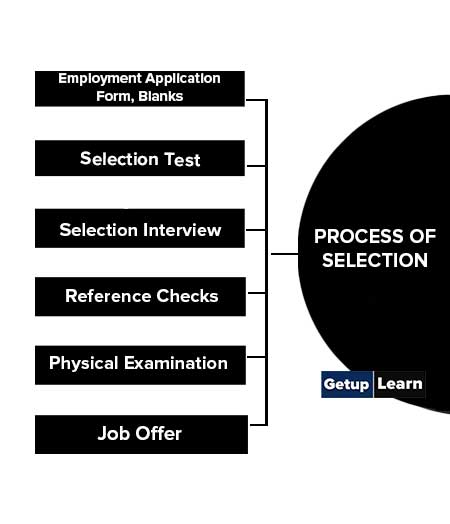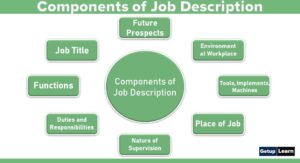Table of Contents
What is Selection?
Selection is the process of choosing from among the candidates from within the organisation or from outside the most suitable person for the current position or for a future position.

But selecting the most suitable candidate for a job is never an easy task as it becomes very difficult to screen candidates and fill vacancies that are very important for the organisation. It is because the faulty selection of employees may adversely impact the performance of the organisation.
The Human Resources department initiates the next step in the selection process to select the best candidate for the job. The basic aim of this process is to find the best candidate for the jobs that fall vacant. Through the selection procedure, the suitable employees and less suitable ones are identified.
In simple terms, the selection is a systematic procedure to identify suitable candidates for the jobs in the organisation from the available applicant pool. David Decenzo defined it as, “Selection is a managerial decision-making process to predict which job applicants will be successful if hired.”
Definition of Selection in Hrm
Following are the definition of selection:
Selection is the process by which candidates for employment are divided into two classes those who will be offered employment and those who will be not. By Dale Yoder
David Decenzo defined it as, “Selection is a managerial decision-making process to predict which job applicants will be successful if hired.”
According to Thomas H. Stone, “Selection is the process of differentiating between applicants in order to identify (and hire) those with a greater likelihood of success in a job.”
Difference between Recruitment and Selection
These are some points of difference between recruitment and selection:
| S.No. | Recruitment | Selection |
| 1. | The process of recruitment begins with the creation of an applicant pool from different sources. | The process of selection ends with the selection of the number of candidates for the job. |
| 2. | The main aim of recruitment is gathering as many applicants as possible for jobs in an organisation. | It attempts to eliminate applicants in various stages and ends up with a smaller number of required candidates. |
| 3. | It is a positive activity. | It is a negative activity. |
| 4. | It is comparatively easy as the creation of an applicant pool does not demand any special skills. | It is a difficult activity as the selection of a suitable candidate requires specialised knowledge and skills for choosing the best possible candidate. |
| 5. | It is a searching function wherein prospective candidates are searched for the jobs which are offered in the organisation. | It is a screening function as it checks the suitability of the candidates for the jobs offered. |
Process of Selection
The selection process of the organisation depends on the various jobs and their nature and requirements. A good selection process should be able to distinguish applicants who are most suitable from those who are not suitable. The following are the steps in a selection process:
- Employment Application Form, Blanks
- Selection Test
- Selection Interview
- Reference Checks
- Physical Examination
- Job Offer

Employment Application Form, Blanks
An organisation collects application forms from applicants to collect extremely useful information from them in a very short span of time. It is useful in determining the suitability of the applicants and helps in predicting their job performance if they are chosen. The application form should be prepared with careful consideration and should be reviewed regularly.
Generally, an application form collects basic information such as name, father’s name, date of birth, age, gender, marital status etc. It also collects information about the educational qualifications, courses completed, major subjects, year of passing, percentage, rank and name of an educational institution.
It may also collect information about work experience and previous positions held by the candidate, the nature and benefits of the job and the reason for leaving it. Through the application form, the organisation may also collect details about participation in extracurricular activities. Further, names and addresses of a few references that have knowledge about the candidate can also be collected.
Selection Test
As there are differences in the abilities, aptitudes, interests and traits of candidates, it is important that these differences are measured for selecting the most suitable candidate. For this, various types of selection tests are used. according to Cronbach, “A test is a systematic procedure for comparing the behaviour of two or more persons.” One of the most common methods to test the candidate is by using the psychological test.
Psychological tests help the Human Resource Managers to select and place employees and determine the most suitable career plan for them. They also help them to assess their job performance as well as act as an aid in counselling employees in conflicting situations.
The following are the major types of psychological tests:
- Ability Test
- Intelligence Test
- Aptitude Test
- Achievement Test
- Personality Tests
- Interest Test
- Honesty and Integrity Test
Selection Interview
A selection interview is conducted to collect information that has not been collected during the other stages of the selection process. Depending upon the nature of the job, one or more interviews may be conducted. In simple terms, an interview is an activity where thorough face to face conversation and information are collected to determine whether the candidate is suitable for the job or not.
The following are the main objectives of the interview:
- It is a way in which gaps in information are filled that are left during the previous stages of the selection process.
- It establishes direct and personal contact with the applicant so that information obtained could be verified.
- It creates two-way communication as there is a mutual exchange of information between the candidate and the organisation.
- It provides a platform for the organisation to create goodwill in the labour market by offering good hospitality, courtesy and personal care to applicants.
Types of Interviews
The following are the major types of interviews:
- Structured Interview
- Unstructured Interview or Open-ended interview
- In-depth Interview
- Stress Interview
- Panel Interview
Reference Checks
When the candidates fill out the application forms, the candidates are requested to fill in the names of at least two references who can be contacted by the organisation to cross-check the information provided by the candidate. Normally, these names are of the people who know the candidate.
They may be friends, relatives, previous employees, faculty of the institute where the candidate has studied or any other prominent persons who are familiar with the candidate.
Physical Examination
Physical examination is undertaken with the aim of ensuring that the selected candidates meet the physical requirements of the job. It also safeguards the organisation from hiring people with pre-existing ailments. But this step depends on the general organisation practices as some organisations in India insist on comprehensive medical tests while others do not insist on such tests.
Job Offer
It is the last step in the process of selection. Here the candidate is informed about their provisional selection. A job offer that specifies the terms and conditions of employment is issued to the candidates who have successfully cleared the interview and the physical examination.
Once a positive response is received from the candidate, the process of integrating the candidate into the organisation is initiated and his conversion from a possible candidate to an employee begins. The acceptance or rejection of a job offer is influenced by the following factors:
- Alternative job opportunities are available.
- Nature and extent of supervision, work schedule and nature of the coworkers.
- Pay and benefits, opportunities for advancement in career, the reputation of the company as a workplace.
- Recruitment activities, such as how the candidate is recruited and how information is conveyed to the candidate.
What do you mean by selection?
The selection procedure is the system of functions and devices adopted in a given company for the purpose of ascertaining whether or not candidates possess the qualifications called for by a specific job or for progression through a series of jobs.
What is selection in HRM definition?
Selection is the process by which an organisation chooses from a list of screened applicants, the person or persons who best meet the selection criteria for the position available. By Keith Davis
What is the process of selection in HRM?
In process of selection in HRM is done in 6 steps:
1. Employment Application Form
2. Selection Test
3. Selection Interview
4. Reference Checks
5. Physical Examination
6. Job Offer etc.














